Overview
As you may have heard, TU Delft will be discontinuing its subscription to the Web of Science Core Collection and related databases. You can read the official announcement here.
To support your research needs during this transition, we’ve prepared a guide highlighting alternative resources tailored to various research use cases. Explore the guide to find tools and databases that can help you continue your work seamlessly.
Web of Science Core Collection
Use cases:
- Citation tracking and author impact analysis.
- (Systematic) literature reviews.
- Research evaluation and benchmarking.
- Institutional performance analysis.
| Alternative | Description |
| Scopus | Comprehensive citation database with strong coverage in STEM disciplines. Offers advanced search features, robust author profiles, citation metrics, and journal analytics. Recommended as a source for systematic literature review. Can be used in tandem with SciVal for institutional benchmarking, collaboration mapping, and strategic planning.
|
| Dimensions | Rich analytical environment with access to publications, citations, datasets, grants, patents, clinical trials, and policy documents. Offers powerful visualisation tools, filters, and trend analysis. Features full-text searching. Works well alongside Altmetric Explorer for tracking societal and media impact.
|
| OpenAlex | Open and transparent scholarly index. Covers a vast range of outputs, including journal articles, dissertations, and preprints. Useful for metadata harvesting, citation linking, and integration into custom tools or dashboards. Supports open infrastructure initiatives.
|
| The Lens | Combines scholarly literature with global patent data. Offers citation analysis and easily shareable dashboards, making it ideal for innovation-focused research. Directly go to Lens.org Scholar to search for scholarly literature or Lens.org Patents for patent information.
|
| Google Scholar | Freely accessible search engine for scholarly literature across disciplines. Useful for citation tracking and broad discovery. However, it lacks transparency in coverage, has limited filtering and export options, and does not support advanced analytics like Scopus, SciVal, Dimensions or Lens.org.
|
Derwent Innovations Index
Use Cases:
- Patent searching and analysis.
- Innovation tracking across sectors.
- Technology landscape mapping.
- Linking scholarly research to intellectual property.
| Alternative | Description |
| Dimensions | Includes global patent data alongside publications, datasets, grants, clinical trials, and policy documents. Offers visualisation tools and filters for exploring innovation trends and linking patents to scholarly outputs. Particularly useful for identifying research-to-innovation pathways.
|
| The Lens | Integrates scholarly literature with global patent databases (USPTO, EPO, WIPO, etc.). Offers easily shareable dashboards, citation analysis, and powerful search capabilities. Ideal for innovation-focused research workflows. Directly go to Lens.org Patents to search for patent information.
|
Notes:
- Both platforms support cross-linking between patents and publications, enabling researchers to trace the development of ideas from research to application.
- Lens.org is especially strong in IP analysis, and visual storytelling through dashboards.
- Dimensions provides a more integrated view of research funding, outputs, and innovation, making it suitable for strategic planning and institutional reporting.
Journal Citation Reports (JCR)
Use Cases:
- Journal evaluation and comparison.
- Supporting publication strategy and journal selection.
- Collection development and subscription decisions.
| Alternative | Description |
| Scopus Sources (CiteScore) | Includes CiteScore, SJR (SCImago Journal Rank), and SNIP (Source Normalised Impact per Paper). These metrics offer a broader and more transparent view of journal performance across disciplines.
|
| SCImago Journal & Country Rank | Free platform based on Scopus data. Offers journal rankings by subject area and country, using SJR. Useful for identifying reputable journals and comparing across fields.
|
| TU Delft Journal Browser | A tool that helps finding reliable open-access journals to publish in. It provides a curated database of journals, pulling information from sources like DOAJ Directory of Open Access Journals and agreements with Dutch academic publishers. The platform offers details on each journal, including any associated article processing charge (APC) discounts for TU Delft authors, open access agreements for free or reduced-cost publishing, and key metrics like SJR (SCImago Journal Rank) and CiteScore.
|
| DOAJ Directory of Open Access Journals | Useful for identifying quality open access journals. Includes information on time to acceptance, licensing policies, article processing charges (APCs) and more.
|
| Diamond Discovery Hub | Helps finding Diamond* open access journals, including TU Delft OPEN journal titles and reputable titles not (yet) covered in DOAJ Directory of Open Access Journals.
* No fees to either reader or author.
|
Note:
- These tools are intended to support journal discovery, strategic publishing decisions, and collection management, not to assess researcher quality or impact.
MEDLINE
Use Cases:
- Accessing biomedical and life sciences literature.
- Supporting clinical and translational research.
- Finding peer-reviewed articles, reviews, and case studies.
- Systematic reviews in health-related fields.
| Alternative
|
Description |
| PubMed | Free and authoritative access to MEDLINE and other life sciences content. Maintained by the U.S. National Library of Medicine. Supports advanced search strategies, MeSH terms, and filters for clinical trials, reviews, and more.
|
